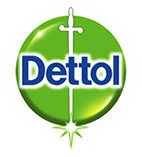To reduce the spread of germs and help stop mould and mildew growing in your bathroom, simple cleaning and disinfection techniques can be used.

Bathroom Cleaning Tips
Although toilet bowls are likely to contain germs, the risk of picking up germs directly from the toilet bowl is usually low because people don’t often touch it. However, germs from the toilet can splash onto other surfaces during use or flushing, and travel round your bathroom on unwashed hands. This is a particular concern if someone in your family is sick with a tummy upset.
The greatest risk of infection in the bathroom comes from surfaces that you frequently touch – like the toilet flush handle, toilet seat, taps, and door handle.
Personal Hygiene
Always wash your hands after using the toilet, changing a baby’s nappy or disposing of potty contents in the toilet.
Surface Hygiene
You can help keep bathroom surfaces clean by following these simple steps.
- Clean and disinfect the toilet bowl as often as necessary to prevent the build-up of dirt and lime scale that can harbour germs and cause nasty odours. If you use a toilet brush, make sure it is stored clean and dry after use. Close the toilet lid before flushing to help stop germs spreading.
- If your child uses a potty, dispose of the contents in the toilet, not the sink. Ensure that you clean and disinfect the potty after each use.
- Clean and disinfect hand-contact surfaces such as the toilet flush handle, toilet seat, taps and door handles frequently.
- Clean up spills of body fluids (e.g. faeces, vomit) immediately, and disinfect these surfaces.
- Rinse baths, sinks and showers with clean water after use, and clean them regularly using a product that will remove soap scum and scale, then rinse the surfaces thoroughly and leave them to dry. You only need to use a disinfectant on these surfaces if they are used by someone who has an infectious disease or if they are contaminated with body fluids (e.g. faeces and vomit).
- Germs can grow in showerheads. If you haven't used your shower for a while, let it run on full power on a hot setting for a minute or two to flush any germs away before using.
- Store personal items (like toothbrushes and razors) where germs are unlikely to splash onto them. Rinse them with clean, safe water after each use and store them dry. Never share personal items.
- Remember to wash your hands thoroughly after cleaning the bathroom.
It is best to replace bathroom carpets with hard surface flooring, such as tiles, vinyl, laminate or wood. These are more hygienic because they are easier to clean and do not collect debris in the same way that carpets can.
Controlling Mould and Mildew
Reducing mould and mildew in the bathroom is all about controlling moisture. Follow these guidelines:
- Keep the bathroom well ventilated.
- Clean and disinfect tiled walls and other hard surfaces where moisture is likely to collect.
- Remove any visible mould or mildew from hard surfaces using suitable anti-fungal cleaning products.
- Clean shower curtains with a suitable disinfectant product or launder them according to the curtain manufacturer's instructions.
- Launder and replace towels frequently.
